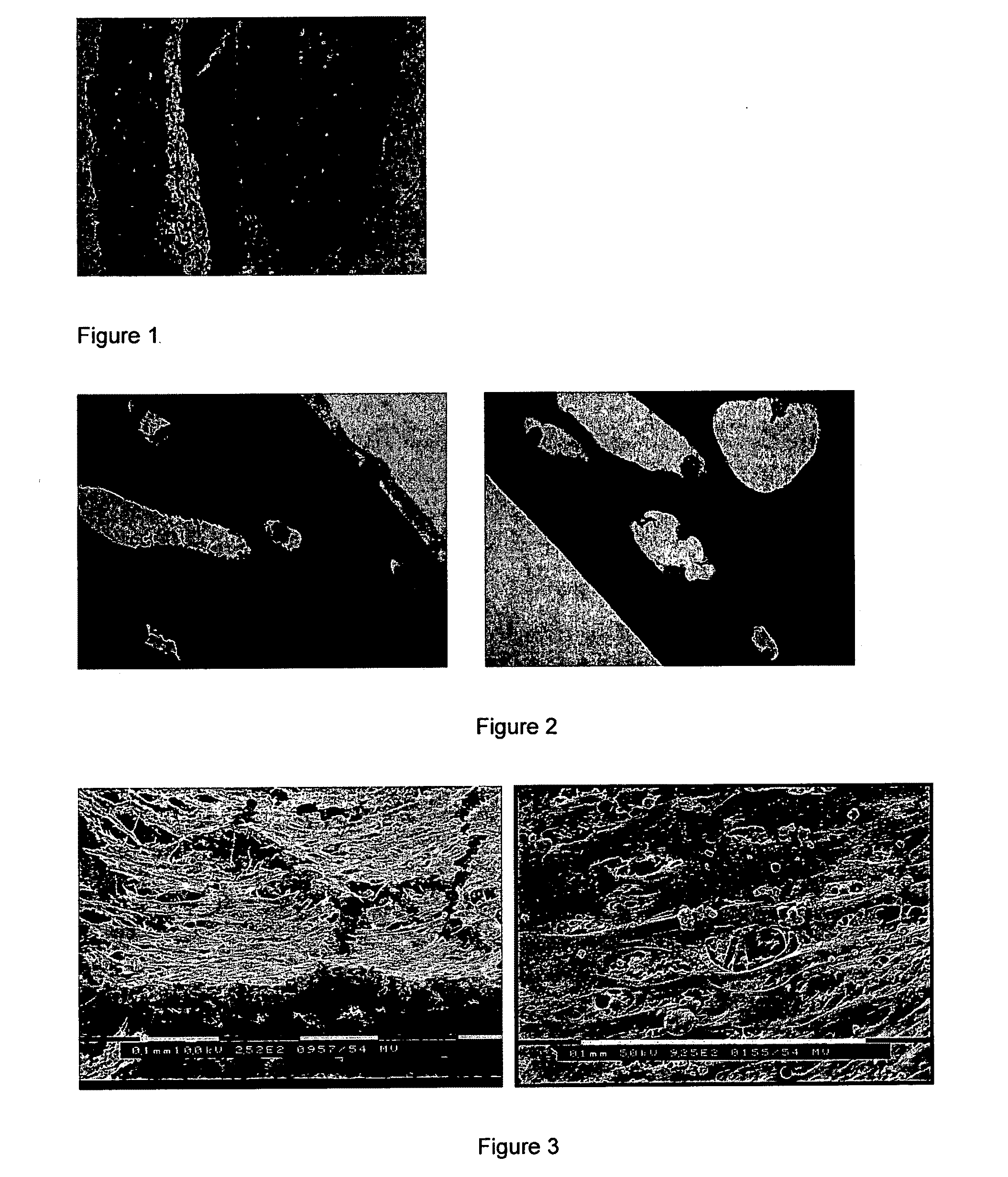Use of tropoelastin for repair or restoration of tissue
a tissue repair and tissue technology, applied in the field of tropoelastin and tissue repair and restoration, can solve the problems of limiting the range of elastic properties that elastin can provide, unwanted tissue reaction or allergy in some individuals, and preventing effective
- Summary
- Abstract
- Description
- Claims
- Application Information
AI Technical Summary
Benefits of technology
Problems solved by technology
Method used
Image
Examples
example 1
Formation of Elastic Material in the Absence of Cross-Linking Agent
[0133]Tropoelastin is preferably mixed at a concentration of more than 1.5 mg / mL, typically 10-200 mg / mL in phosphate buffered saline and the solution is adjusted using 1M NaOH to a pH of between about pH 9 to about pH 13, preferably pH 11. The solution is then warmed above 4° C. preferably to about 37° C. A soft paste-like entity is formed which then sets to form the elastic material.
example 2
Formation of Elastic Material at Lower Alkaline pH Ranges with Salt
[0134]Tropoelastin was dissolved in an aqueous solution at a concentration of 10 mg / mL. The salt concentration and pH of the aqueous solution were titrated between 0-150 mM and pH 7-12, respectively. The temperature of the tropoelastin solution was raised to 37° C. and the ability to form an elastic material assessed visually and tactilely. Any elastic material thus formed was tested for its persistence upon cooling.
[0135]Two transition points were seen as the pH decreased. Above a pH of 10, there was no need for salt within the solution in order to form a persistent elastic material from the tropoelastin in the solution. However, as the pH decreased below 10, a salt concentration of approximately 60 mM was needed in order to form a persistent elastic material from the tropoelastin in the solution.
example 3
Elastic Material Formation in Presence of Cross-Linker
[0136]A solution of tropoelastin is mixed at a concentration of more than 1.5 mg / mL, typically 10-200 mg / mL with glutaraldehyde (0.001-0.5 % w / v) in phosphate buffered saline at an alkaline pH of approximately 8.5 and warmed to form an elastic material. The material has a pinkish colour and a higher density and stiffness than elastic material formed according to Examples 1 and 2.
PUM
| Property | Measurement | Unit |
|---|---|---|
| temperature | aaaaa | aaaaa |
| temperature | aaaaa | aaaaa |
| concentration | aaaaa | aaaaa |
Abstract
Description
Claims
Application Information
 Login to View More
Login to View More - R&D
- Intellectual Property
- Life Sciences
- Materials
- Tech Scout
- Unparalleled Data Quality
- Higher Quality Content
- 60% Fewer Hallucinations
Browse by: Latest US Patents, China's latest patents, Technical Efficacy Thesaurus, Application Domain, Technology Topic, Popular Technical Reports.
© 2025 PatSnap. All rights reserved.Legal|Privacy policy|Modern Slavery Act Transparency Statement|Sitemap|About US| Contact US: help@patsnap.com

